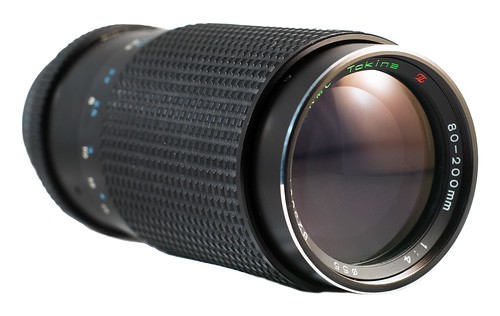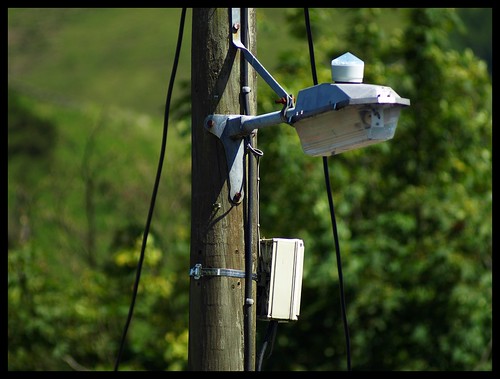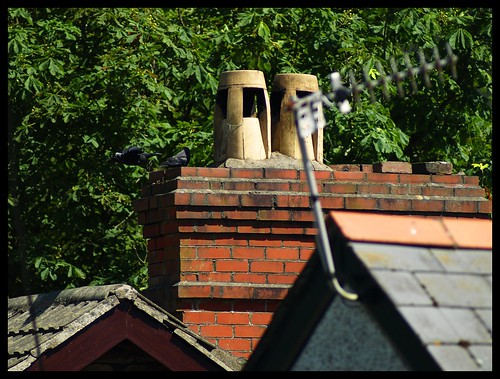This lens is as good a place to start as any!
First of all it's worth mentioning that during my travels of the various forums and websites on the net there seemed to be a general consensus that any zoom lens made before the late 80's/early 90's would be soft, plagued by low contrast, weak colours and extreme image defects such as flaring and colour fringing. The reasoning behind this was that technology at the time was simply not advanced enough to produce optically acceptable zoom lenses.
In more recent years however, and after frequenting sites such as
MFLENSES.COM it became apparent that this was far from the Truth! Indeed it seems that although there are some real stinkers around there is also a fair share of decent zoom lenses from the decades past.
The main negative issue I see with these lenses tends to be a small amount of colour fringing when the lens is wide open but nothing that cannot be corrected in software. What impresses me with the majority or lenses in the 70-200mm (give or take) arena from the 70's and 80's is that they seem to consistently produce sharper images at the long end of the zoom than modern equivalents can manage whilst usually having a usefully faster maximum aperture. I would even go as far as to say that almost all consumer grade zooms in this range available today will inevitably be soft at the long end especially wide open. I cannot believe that technology has taken a backwards step so I can only assume this is a deliberate measure taken my manufacturers in order to split lines into consumer and professional ranges. It is almost guaranteed that a modern zoom that ends at 200mm will have a F/5.6 aperture at best whereas older lenses always seem to be F/4 or better whilst delivering sharpness that is usually significantly better.
Get On With It!

There is some confusion as to if the RMC in the name refers purely to the "rainbow multi coating" or if it signifies this lenses place in Tokina's range. Some have suggested that RMC is an in between grade with ATX being Tokina's best professional lenses and RMC being somewhere between this and the basic consumer models. Other people believe that RMC in it's self is not an indication the quality of the lens and refers purely to the lens coating and that both bad and good lenses have carried the RMC label.
In terms of pure quality and finish this lens seems very well put together, it is of the one touch style that was popular in the 80's and is very compact considering it's specification without feeling cheap or flimsy. For a lens that must be approaching at least 25 years of age the focus and zoom movement are very smooth and well damped. Aesthetically it is subtle but smart with the familiar green font and red logo on the retaining ring of the front element and a silver band at the end of the lens barrel.
Image quality
No need to waste any time here! The image quality is quite remarkable at all zoom settings and all aperture settings. Colours are strong but realistic, contrast is just about perfect and the sharpness had me constantly checking to make sure the lens really was wide open and the aperture hadn't stuck. The only weakness is a tendency to produce colour fringing in areas of extreme contrast but nothing that cannot be corrected swiftly in post processing.
The samples below can be clicked on to view a full size versions so that you can judge the sharpness for yourself, these shots were taken with the lens wide open at 200mm. These images have had mild tweaks of the levels and saturation but the sharpness has not been altered in any way:


Conclusion
This lens can be bought for peanuts, it's well built and delivers amazingly strong images considering its age and compact size. The only negative quality I can see is a slight amount of colour fringing at wide apertures but certainly not enough to spoil the party. Overall I recommend this lens and I find it's superiority to modern consumer equivalents a real hoot, If you can do without autofocus this lens will give you a real step up in quality and it's not alone! In time I will show you models from Tamron, Vivitar, kiron and others that can all be had for similar money and exhibit similarly good performance!




5 comments:
Hello,
I wanted to thank you about this article since I was really in a big confusion about buying this lens. I had find it in a fair price in a Turkish web site which is a partner of ebay. This is the saled item link: http://urun.gittigidiyor.com/TOKINA-80-200-MM-1-4-LENS_W0QQidZZ30085649
I would be very happy if you check it and return a comment about it's condition to me. I cannot completely trust the salesman. If you request additional information or photo, I can request it from the salesman.
Thanks again and again for your informative article.
PS: If you decide to help, can you please send an email to bedri@istanbul.com (not to bedriguler@gmail.com since I dont use it often).
Bedri Ozgur Guler
bedri@istanbul.com
After trying out several older zoom lenses in the 70/80-200 range (and being disappointed), I came across this post and it made me feel much better about going ahead and purchasing one of these Tokina's. I'm really looking forward to using it- your review was thorough and extremely useful to me. thanks!
Hello!
It seems that your Tokina can focus pretty well in the whole focal range. I have just recieved a Tokina RMC 80-200 f4 lens, and right after the firts attempts on my Canon body, I realized that it has serious focus issues.
It can focus to closer objects only. I use it on a Canon T2i/550D body, with an MD/MC EOS adapter ring (which is 7mm thick measured from the body to the lens).
I took the back element closer to the body, to balance the focal length. It is a bit better now, but I can use the lens only with unscrewed frontal part, letting the front moving free. If I use it unscrewed, the lens can focus on the infinity, but not at the total focal range.
Did you do anything for proper focusing on your lens? Do you think that this issue can be fixed at all in DIY method on my EOS body?
Anyway thank you for your post about the Tokina!
Gabor
I am using this lens on a Sony A3000 and it is sharp, has excellent contrast and color. It has better sharpness than any other 70-200 or 80-200 lens I have owned in the past. While not a true macro it does a great job as a close focus lens. Flare and CA are controlled very well and can be corrected in post processing when they occur. Using an appropriate hood additionally helps.
I just bought this lens and a canon fd 50mm f1.8 and an old canon t50 film camera for $50. Bought it for the 80-200 which I discovered is poluted bad with fungus. Tried to clean it and gave up trying to take it apart. Put it on sony a7ii and took a few pictures. Still takes great sharp pics even with pretty gross fungus in front element. Think ill just rock it like that :)
Post a Comment